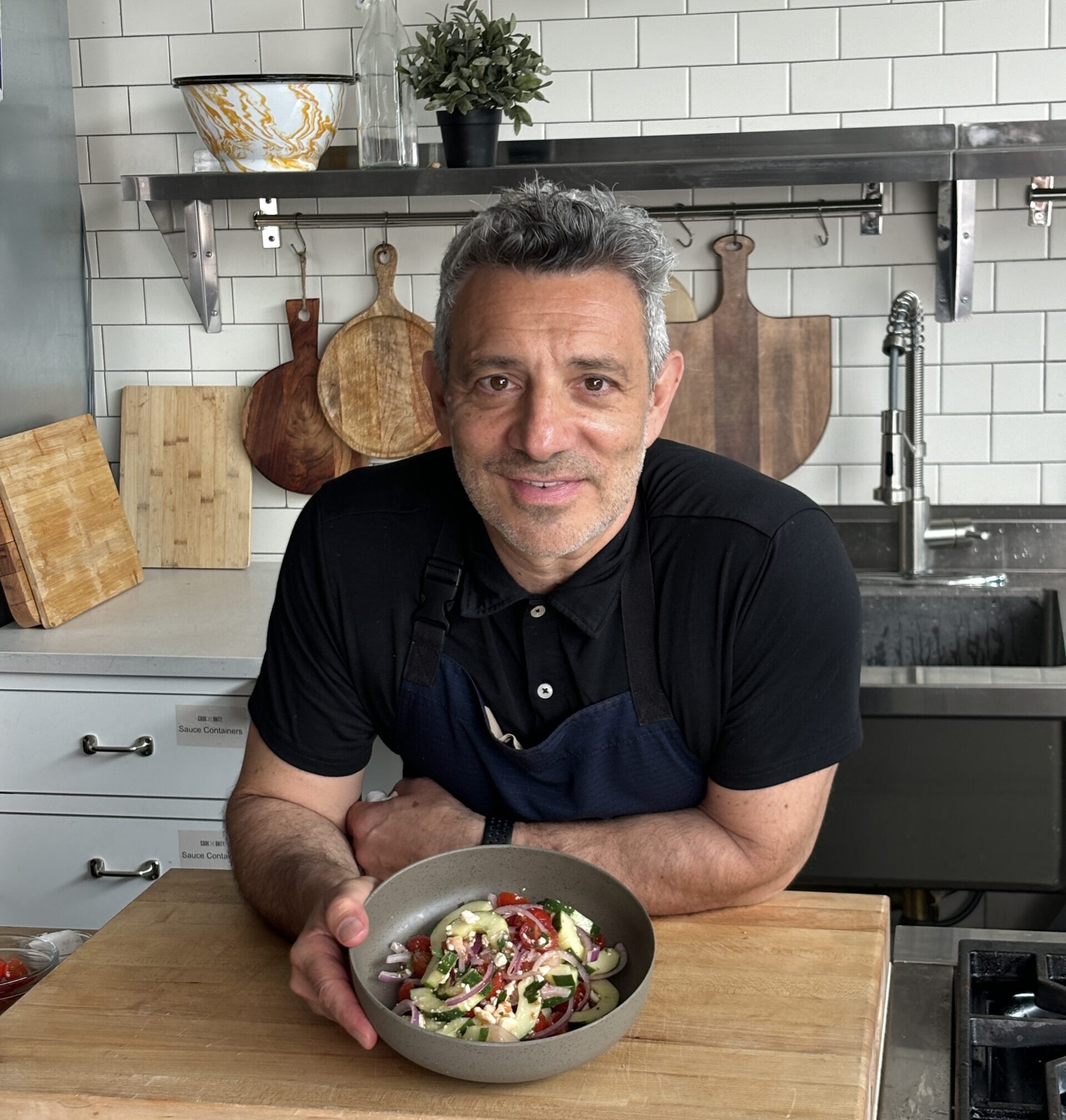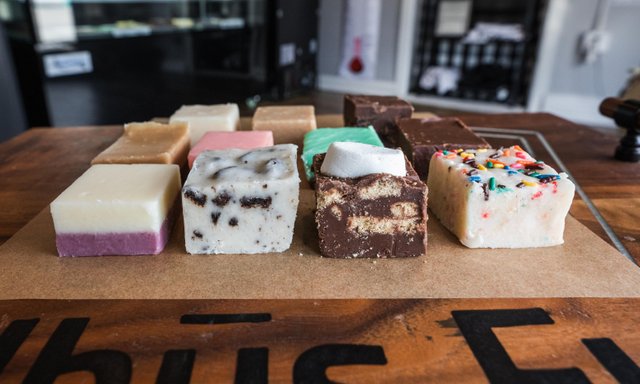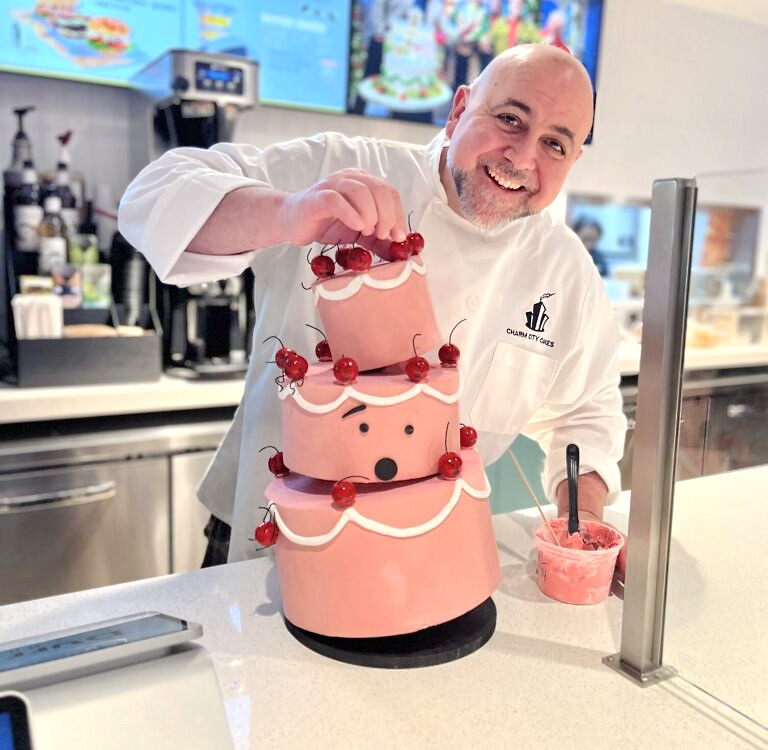
At Parish Hill Creamery in Putney, Vermont, co-owners and cheesemakers Rachel Fritz Schaal and Peter Dixon make seasonal, handmade natural cheeses that are big in flavor and steeped in cheesemaking tradition. The couple founded the creamery in 2013, building on Dixon’s experience as a cheesemaker dating back to 1983. Milk is sourced from the Elm Lea Farm at Putney School, about six miles from the creamery.
Dixon and Fritz Schaal’s natural approach means that their cheeses are made with raw milk from pastured cows, using fermented cultures they make themselves to capture microbes from the local environment. Most cheesemakers utilize commercially-produced cultures that have been optimized for rapid fermentation, as well as to produce specific cheese textures and flavors.
“[Thanks to our own fermented cultures] we’ve got the actual microbiome of the farm’s environment—the pastures, the cows, the barn—contributing all the bacteria through the milk that we make the cheese from, so there’s no external ingredient,” says Dixon. “It’s the milk doing the work of turning itself into cheese, just with our facilitation.”

Owners Peter Dixon and Rachel Fritz Schaal.
“One of the misconceptions that people have about natural cheesemaking is that it’s wild and out of control and you never know what you’re going to get,” adds Fritz Schaal. “The exact opposite is true. It’s really more about being careful cheesemakers—by keeping our eye on the vat and by using the best possible practices in the make room and in the age room, we are able to get cheeses in which the variability is pretty slight.”
Parish Hill’s current lineup of 13 cheeses ranges from bold, earthy blues to funky tomme-style wheels, aged for at least 60 days and often much longer. “It’s pretty hard to miss a Parish Hill Creamery cheese,” says Dixon. “They’re pretty big in flavor in general and they deliver quite a pack of sensory delight.”
Some cheeses are developed intentionally, such as Cornerstone, which is made in collaboration with Birchrun Hills Farm in Pennsylvania and Cato Corner Farm in Connecticut (previously profiled in Beyondish). Each creamery uses the same recipe, cheese forms, and aging process, but since the milk and starter cultures are different at each farm, the resulting cheeses are different, too. “Even though they were made with a similar moisture content and similar acidity, they don’t turn out the same,” says Dixon. “Because of their location and their herd makeup (what breed of cows they have in their herd), you’re going to get distinctive differences.”

Other Parish Hill cheeses arise from what Fritz Schaal describes as “happy accidents,” like Idyll, which was supposed to be a hard, salty, grana-style grating cheese, similar to Romano. “We waited a year, and when we tried it, Rachel cried, because it wasn’t grana inside,” says Dixon. “It was pretty smooth, it had a little gas bubbles, and it was very sweet, like Swiss cheese. It was very good, but not really developed yet.”
“It was sort of an existential moment—do we learn to love the thing that we have, or do we go back to the drawing board and go for the original outcome?” says Fritz Schaal. They opted to embrace their creation and allow it to continue aging into a savory, nutty cheese that melts perfectly for fondue. She continues, “It was formative in terms of how we would approach cheesemaking from there out: instead of chasing an outcome, letting the cheese actually become its best self.”
In addition to their dedication to the craft of cheesemaking, Fritz Schaal and Dixon are passionate about their work as teachers and consultants, fostering the next generation of natural cheesemakers.
“We see natural cheesemaking as a pathway for small-scale farmstead cheesemakers to actually remain viable in an incredibly competitive environment,” says Fritz Schaal. “I hope that we are able to get that message out and to help other small-scale producers make truly exquisite cheese that is evocative of their business, their animals, and their locale. And that also means getting the word out to eaters, the people who are ultimately buying the cheese and eating the cheese. I hope that natural cheese is valued by folks who are eating it.”
NEXT ON THE DISH








